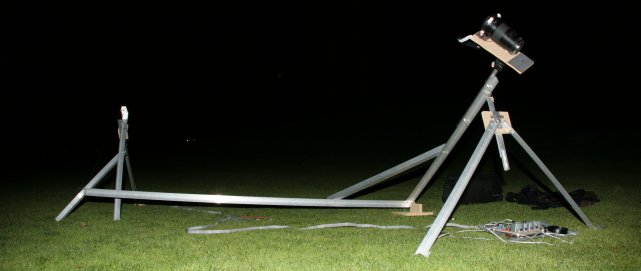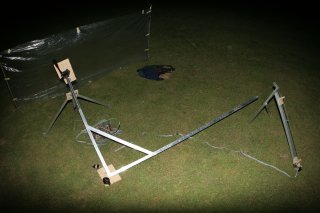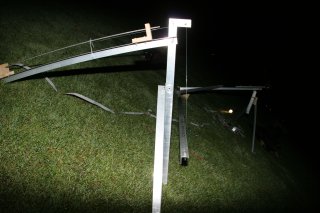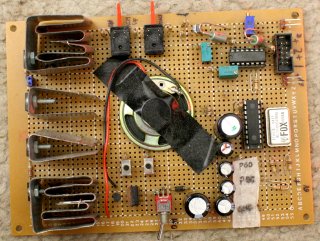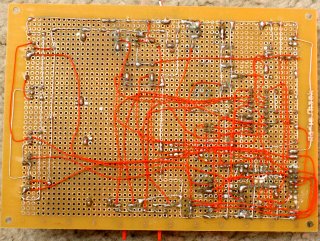
To photograph animals you need a telephoto lens. To photograph athletes you need a longer lens. To photograph airplanes you need an even longer lens. To photograph space, you need a trapezoid.
The trapezoidian equatorial mount allows digital cameras to see very very far. It's similar to the Scotch mount in that it uses hinges and the angle reduction of a long lever to track over a short distance. The similarities end there. The trapezoidian design is dictated by its need to be portable and accurate.
It uses aluminum rods instead of sheet wood, a pulling corkscrew instead of a pushing corkscrew, supports polar alignment without a second tripod head, mounts the camera on the end of a declination arm, and has much higher accuracy than a Scotch.
Because of this, we feel the trapezoidian is to the Scotch what the Dobsonian is to the Alt-Azimuth.
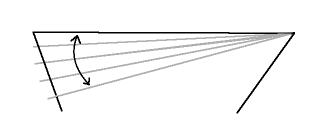 The trick with
the trapezoid is the long member with the angle reduction is supported
by 2 short members. The 2 short members control azimuth and altitude
alignment.
The trick with
the trapezoid is the long member with the angle reduction is supported
by 2 short members. The 2 short members control azimuth and altitude
alignment.
Much has been made of the tendancy of Scotch mounts to drift during long exposures. Since digital cameras don't need the length of exposures that film cameras needed, the drift isn't as much of a problem. The trapezoidian uses a fishing line drive that naturally forms an isosceles triangle. Extra accuracy can be gained by programming the microprocessor to change speed based on an odometer.
 A
trapezoidian locked & loaded can be carried up mountains by people
other than heroines.
A
trapezoidian locked & loaded can be carried up mountains by people
other than heroines.
The moving part in a trapezoidian is 2 pieces of aluminum arranged in a right angle. One piece is 5 ft, points east, and is raised to achieve about 15.04° of rotation per hour. This is the rate at which stars track across the sky, not the rate at which the Earth finishes a day. The perpendicular leg is 3 ft, and points exactly on the Earth's axis of rotation.
Of course, unless you live between two certain latitudes, the declination arm can be too steep or to shallow without raising the fulcrum.
Additional members support the camera platform. The right ascention arm is held up by 5lb fishing line and hangs in mid air.
The fishing line is pulled by a servo and corkscrew. The corkscrew must be stiff enough to resist bending, which makes it the heaviest part.
The servo speed is regulated by a tachometer and electronics package.
MORE ABOUT THE ELECTRONICS PACKAGE
Unfortunately the right ascention arm can only move 15°, limiting your observing time to 1 hour before needing a reset and reacquisition of the subject. Also it's not accurate enough for any more than 300mm images up to 30 seconds.
The hardest part is aligning the altitude and azimuth.
FABRICATING A TRAPEZOID The dimensions and materials used in the trapezoid are available here.
 A
windscreen is critical for using the trapezoid. Read about the WINDSCREEN ODYSSEY
A
windscreen is critical for using the trapezoid. Read about the WINDSCREEN ODYSSEY
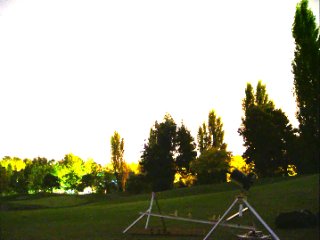 Timelapse movie of a trapezoidian 1440x1080 5.1MB
Timelapse movie of a trapezoidian 1440x1080 5.1MB
Trapezoidians aren't just for talking about on web pages, they're for
seeing far. Go to the
TRAPEZOIDIAN GALLERY.

(C) 1997-2024 Starving, flat broke, usually unemployed Programmers
Hosted all these years by Sourceforge
